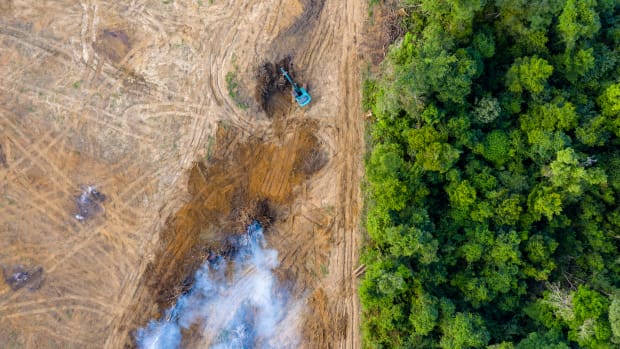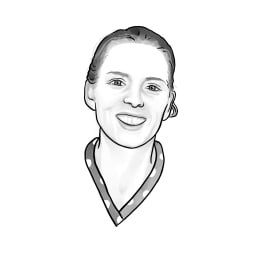
UvA PhD student sees bright spots in Amazon deforestation in local initiatives
Deforestation in the Amazon is heading for a tipping point, after which the forest will no longer recover and turn into savannah. Yet there are bright spots, observes Gabriela Russo Lopes, who has been visiting the Brazilian deforestation belt for eight years and will receive her doctorate from the UvA on Thursday. “The power of the forest is enormous. We just need to create the conditions in which the forest can be itself.”
For eight years in a row, PhD candidate Gabriela Russo Lopes has been visiting the deforestation belt, the strip where much of the forest is being cut down for soybean plantations in the Brazilian Amazon. For her doctorate, she visited local initiatives working toward a sustainable rainforest. During the bus trip from the airport to one of those initiatives, Lopez spent 12 hours looking out over the soybean fields. “Even though the bus only passes through a small part of the total deforestation belt, it’s a sad experience, and it frustrates me. That whole area was once a jungle with numerous water sources. Now it is all monoculture, growing only one crop.”
Here in the Netherlands, we also see a lot of monoculture. Why shouldn’t Brazilians “be allowed” to cut down the forest for the development of their country, since the Dutch and other Europeans have done the same?
“You hear that argument a lot. But surely we don’t have to repeat the exact same mistakes? It is a Western notion that land should be economically productive at the expense of nature. But deforestation is not the only path to the ‘development’ of a country—if you want to use that word at all. Indigenous people and local communities depend on the forest for their survival. Politics sides with the large-scale farmers, leading to an unbalanced discussion of land use in the Amazon. That’s exactly what my dissertation is about, the political and cultural narratives in two different states in the deforestation belt, Acre and Mato Grosso.”

Why did you choose those two states?
“Because the character of the states is so different. In Acre, in western Brazil, the Amazon is relatively well preserved because of the many social movements active there. There, the principle of forest citizenship applies: Man and the forest are one. Mato Grosso is Brazil’s largest commodity producer and soybean exporter. There the modern ideal of agriculture reigns supreme.”
“Yet what is striking is that local forest restoration initiatives exist in both states, the focus of my research. I visited a forest-agriculture initiative in Acre, where crops are planted among native tree species. Complete forest clearing is also ineffective for soil fertility because when the ground is bare, leaves and branches do not fall and fertilize the soil. In Mato Grosso, I visited Brazil’s largest indigenous seed network, an initiative that collects and distributes indigenous seeds to farmers and other land users to replant the original forests.”
Planting a new forest sounds positive, but surely it is disproportionate to the ancient forest being cut down?
“Ultimately, of course, forest clearing prevention is better than restoring what has already been lost. Yet recovery can be faster than you think. Water sources that disappear when the forest is cut down return after a short time when new forest grows. But it does take decades for the forest to return to its natural state.”
Do you still have hope that it’s not too late for the Brazilian Amazon?
‘Yes, and that hope is not naïve. The local initiatives I visited have been there for more than 15 years, one even for more than 30 years. They were also there when right-wing President Jair Bolsonaro was in power. It is proof that other ways of living together with the forest are possible. The power of these initiatives lies not only in that they plant new forests but that they can change our views of the Amazon. They make us begin to see the forest as part of our lives and not just as a resource. If such local initiatives get more attention and are recognized, broader changes can take place.”
“In addition, the resilience of the rainforest is tremendous. When Brazil bought the state of Acre from Bolivia in 1904, they promised to build a railroad from the state in western Brazil to the coast in eastern Brazil, right through the rainforest. But that promise was never fulfilled. Despite the efforts of British rail companies, when a new section of track was built, the old track was already overgrown and taken over by the forest. This shows that the power of the forest is enormous—we just need to create the conditions in which the forest can be itself.”
Gabriela Russo Lopes will receive her doctorate on November 30 for her dissertation, “Forest-Making Agrarian Frontiers: Place-based transformative pathways toward sustainability in the Brazilian Amazon.” The defense will take place at 10:00 a.m. in the Agnieten Chapel and is free to attend.

